Chun T’oh Whudujut
I had a free day in Prince George, BC on a recent trip for work. Wanting some local advice, I stopped by the friendly Prince George Visitor Information Centre, located on the skirts of downtown, in the VIA Rail building. It is smartly decorated with First Nations art and has a modern feel.
After having some fun posing with the plentiful handy dandy moose antlers and buying a postcard (always gotta send mom a postcard!), I asked about interesting hikes in the area.
I gathered some brochures to help with deciding on destinations for future trips and planned my day.
The nearby Ancient Forest was at the top of my list. Besides having an intriguing name, it’s history is a testament to the power of individuals to create positive change.
A number of years ago, David Radies, a student from Prince George’s nearby University of Northern British Columbia was hiking in the area doing research on lichen and came across very old trees – since estimated at 1,000 years old – that were slated to be logged. It turns out he had ‘discovered’ the world’s farthest known inland (800+ km from the Pacific coast) temperate rain forest. He sounded the alarm and did started a movement to save the forest.
Since that time, the community has worked together to put in 400m of universally accessible
boardwalk and 2.3 kms of other boardwalk and trail to allow visitors to experience the beauty of the ancient cedars without undue wear and tear on the fragile forest floor.
I rented a car across the street from the Visitor’s Centre and headed east out of downtown on Highway 16 towards Jasper, Alberta. At about the 113km mark there’s a signed turnoff on your right to the park (if coming from the other direction, the park is about 103 km west of McBride).
There are several trail options, and signage is good. Arguably, the best section is the old growth
on the most easily accessible portion of the trail.
I was there on a Monday afternoon in mid-May, and the vast parking area had only a handful of cars. On the first part of the trail, there was still quite a bit of snow, but locals tell me it is usually gone by this point. The day I was there, the accessible boardwalk could not have handled a wheelchair, and the yellow trail going off to the right to the big tree also was snowy and mucky. I squeezed by the boardwalk snow and pretty soon the trail was free and clear.
The universally accessible trail isn’t long, but it sure is beautiful. You will spend more time than you expect pausing, gazing, looking up at the treetops, looking over at one of the many species of lichen, and examining everything from the hugest tree trunks above to the tiniest plants below you.
Audio - Birds In Ancient Forest
The only sounds were the swooshing of melting snow-fed streams rushing downhill and the chirping of invisible birds high in the canopy.
In Prince Rupert, I’m spoiled, surrounded by temperate rainforest, but these trees seemed different. An ancient forest is, well, ancient and invokes a sense of calm. I luxuriated in the feeling of being surrounded by time immemorial and lingered on the accessible trail. I imagined local First Nations people hundreds of years ago harvesting pieces of cedar bark and using long strips of it for weaving.
The only wildlife I could see was a black caterpillar of some sort, navigating bravely a piece of lichen that was in its way along the railing of the boardwalk trail.
I took the turnoff and headed uphill on well maintained boardwalks with anti-slip features and easy steps.
Shortly after turning off, there appeared a cave at the base of a tree, which was cordoned off by stanchions. No signage explained this but my best guess is that it was the address of a recently vacated bear’s hibernation den. No sign of it’s former occupant, thankfully.
I kept climbing on the trail that ran alongside – and in places – just slightly overtop the rushing creek that was trying to clear out the crisp melt off and send it towards the river. The well-constructed boardwalk held firm.
After stopping at a few trail features along the way, such as this huge fallen tree…
I soon reached my goal for the day, Treebeard waterfall. Recent work by volunteers had created a smart wee wooden bridge and boardwalk with railings to keep viewers safely away from slippery edges. The volume of water gushing down created a pleasant light breeze that was refreshingly cool after hiking up the hill.
The walk back down to the parking area from the falls seemed to take no time at all. Gravity helped boost the spring that was already in my step from seeing such beauty. It is truly a special place. I can’t wait to return when the trail is less muddy, to see what the rest of the park has to offer.
What intrigues you most about an ancient forest?
If You Go:
This park is free! Donations can be made to the Caledonia Ramblers Trust Friends of the Ancient Forest (here’s the link) to help support the volunteer teams who work to keep this trail safe and accessible.
While there’s lots of water in creeks and falls, it isn’t potable. Bring your own water to drink, as none is available on site. The elevation gain gets to 104 metres (343 feet). There was no cell phone reception there – the park is surrounded by bushes and wilderness, so plan accordingly.
If you want to check out the Visitor Centre, they are open 7 days a week from the May long weekend to Labour Day. For online info to assist in planning your trip, TourismPG can help.
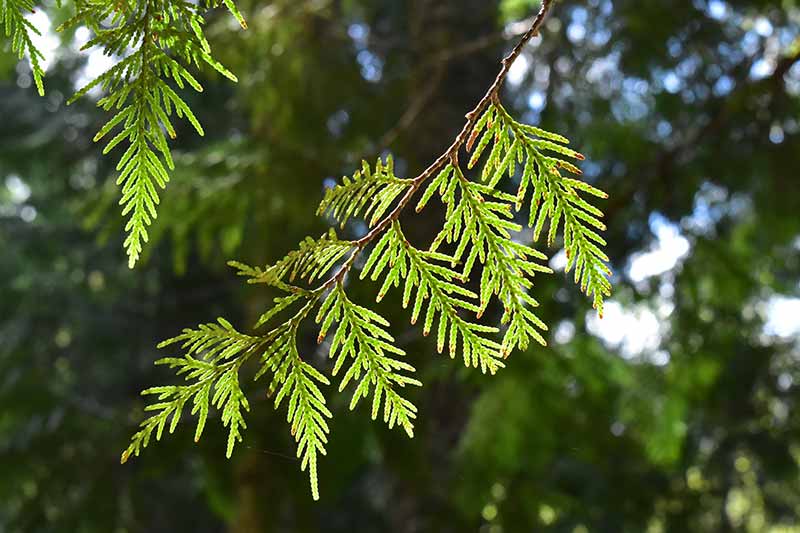

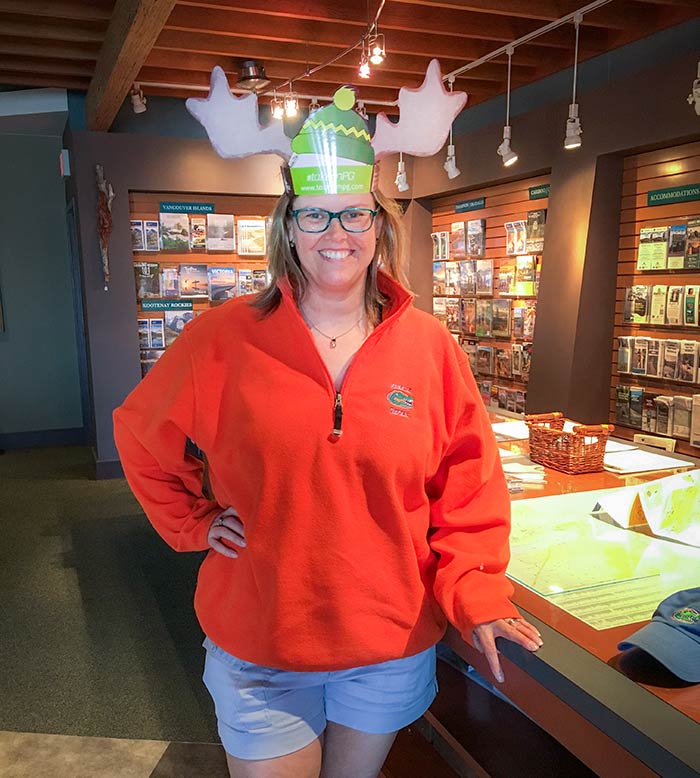

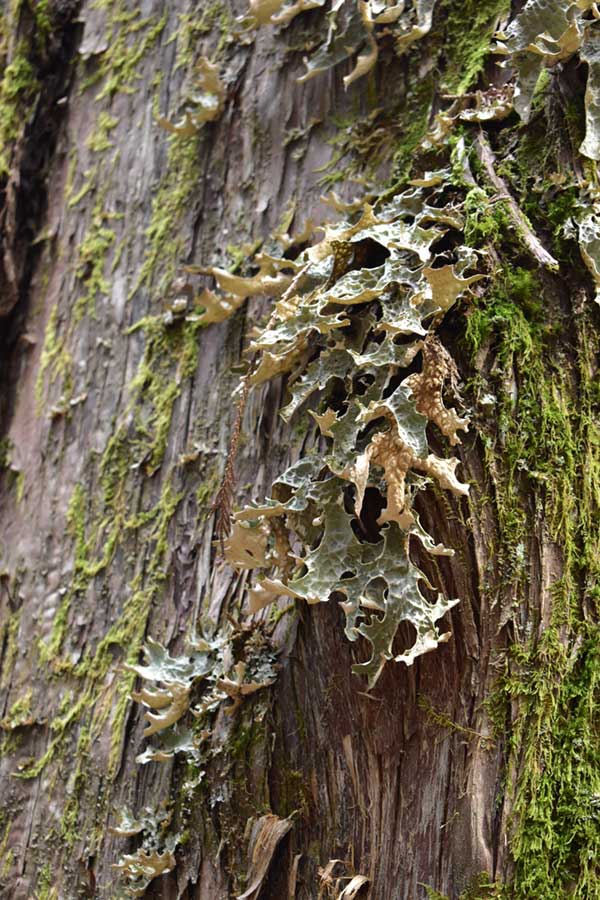
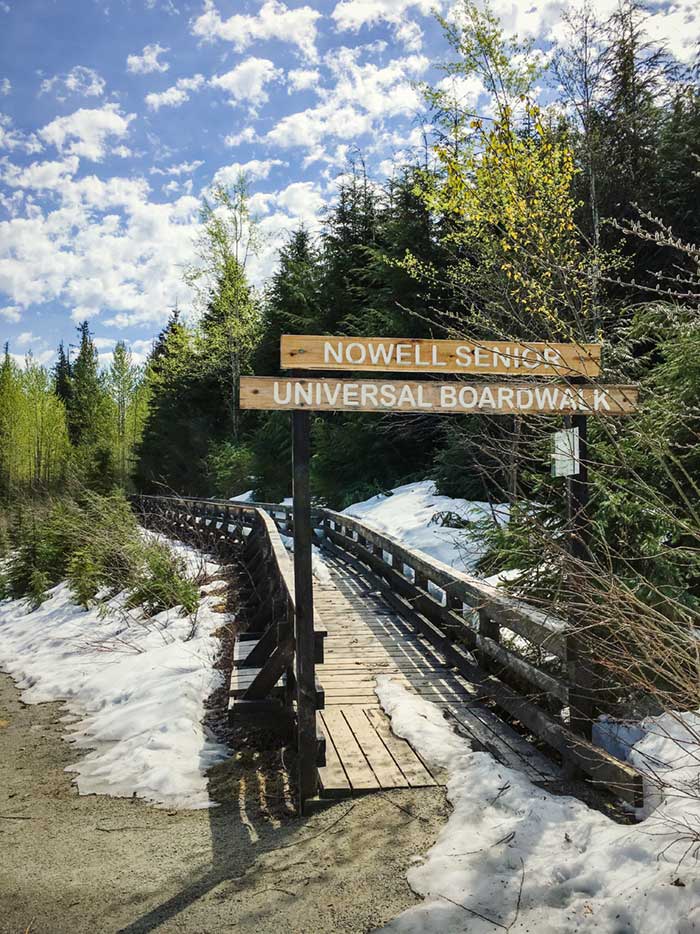
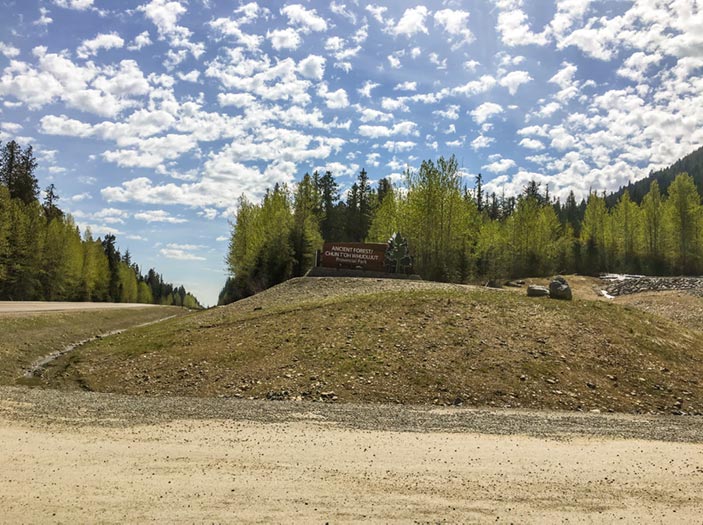
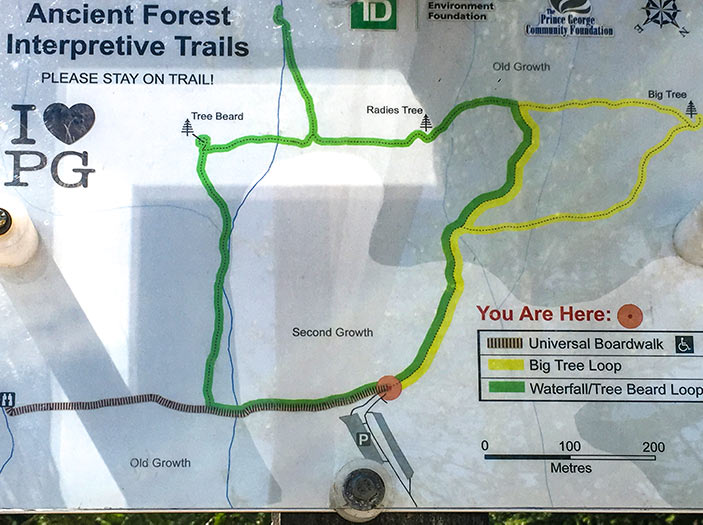

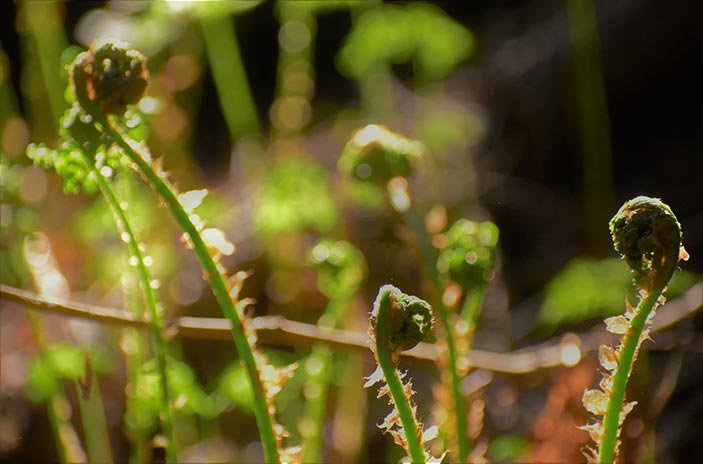
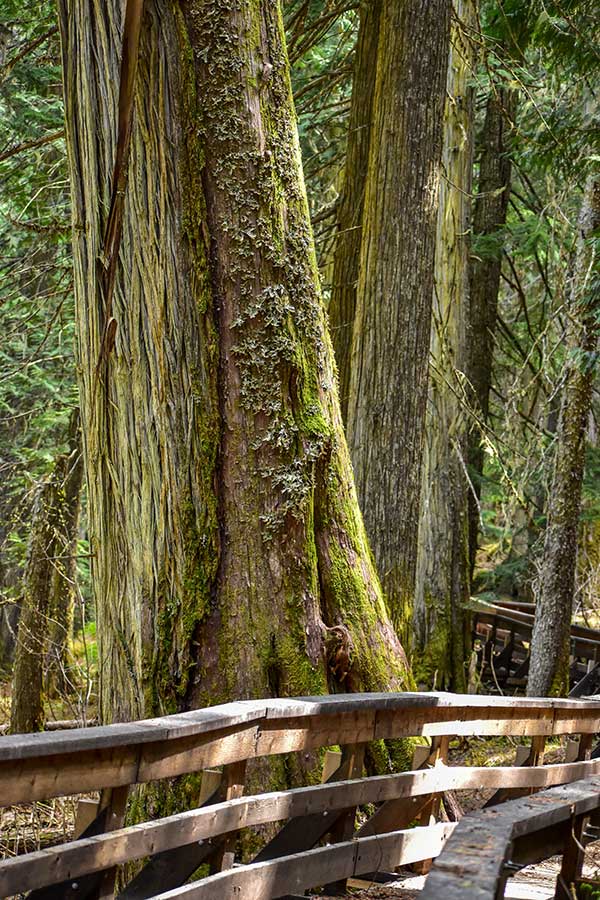
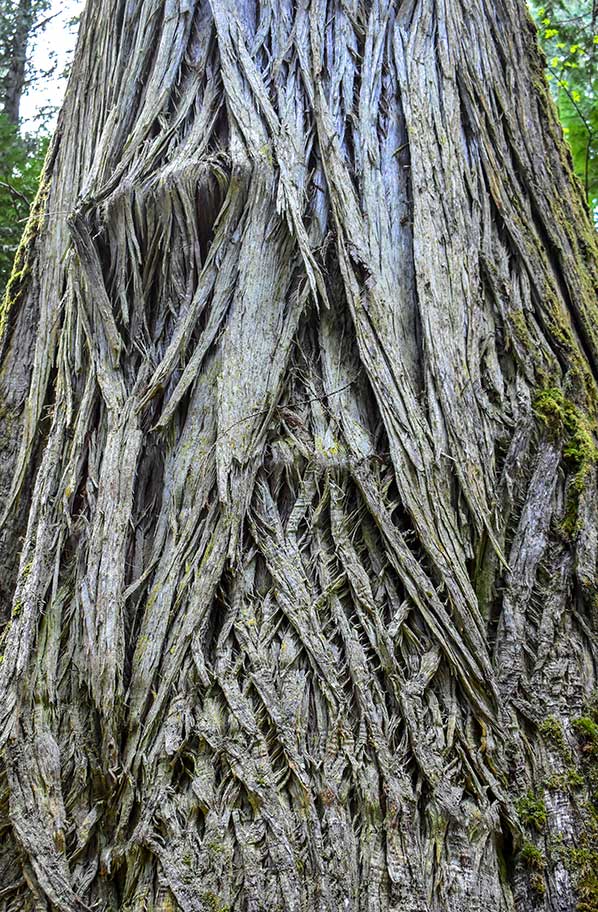
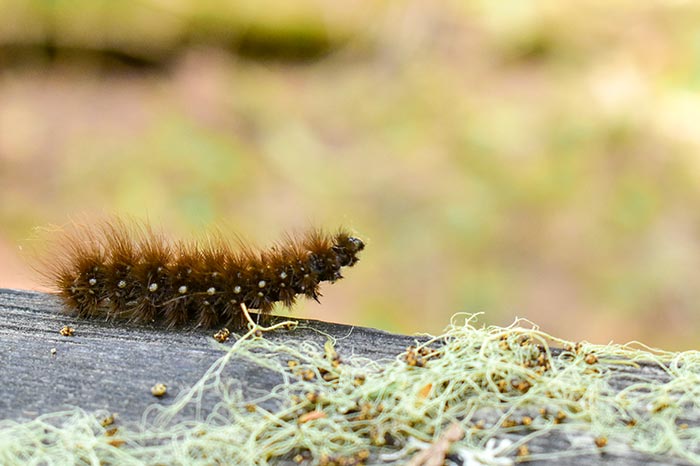
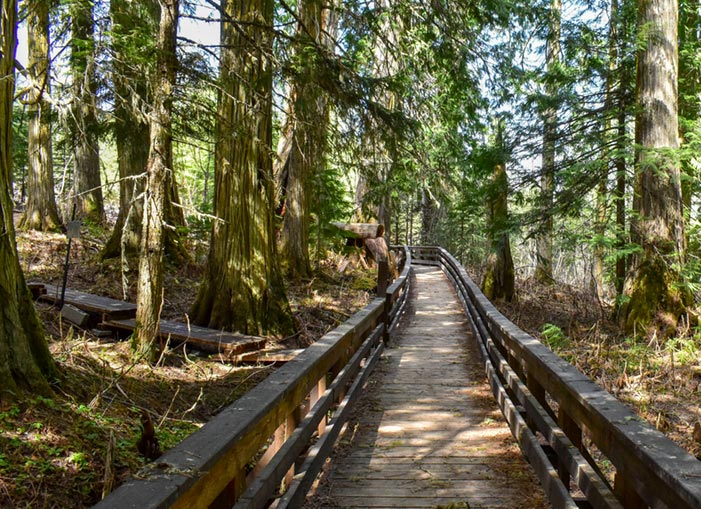
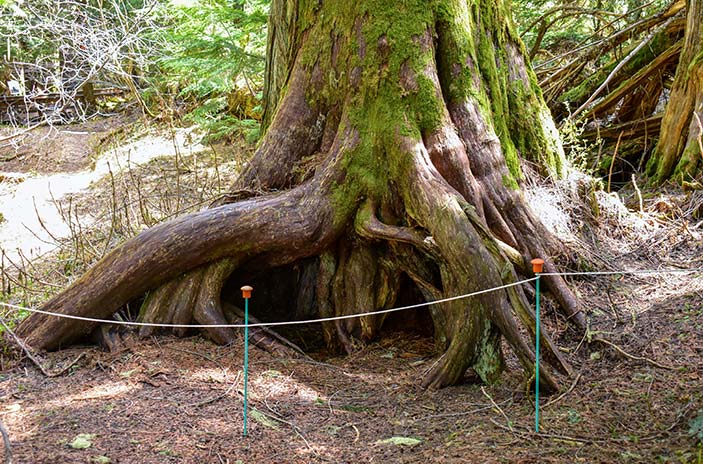
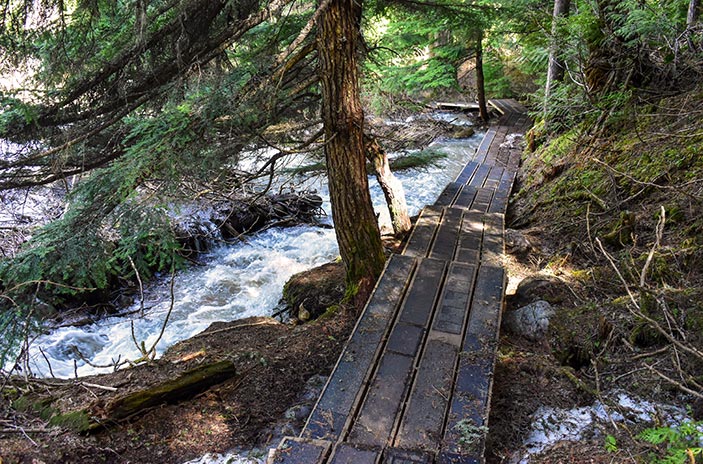
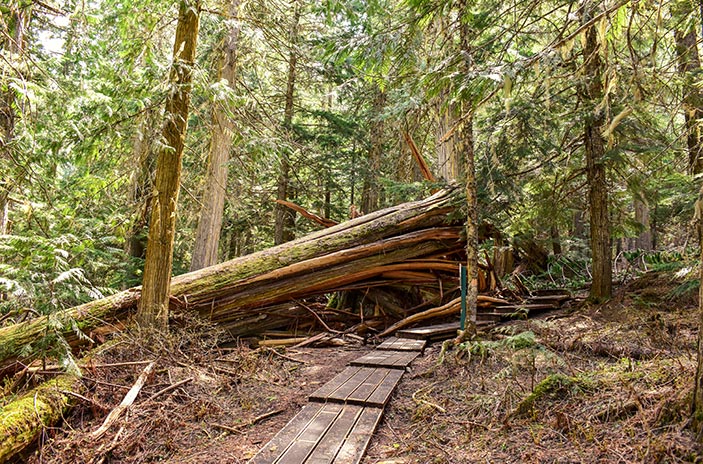

Very interesting post. Makes me want to go there – we haven’t been to Prince George yet. And the photos are excellent.